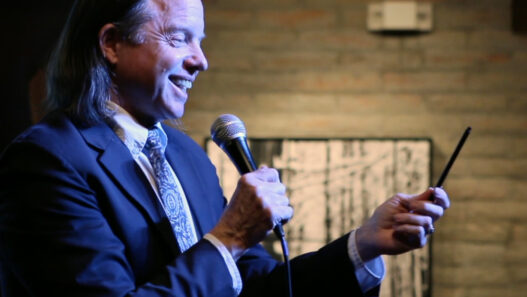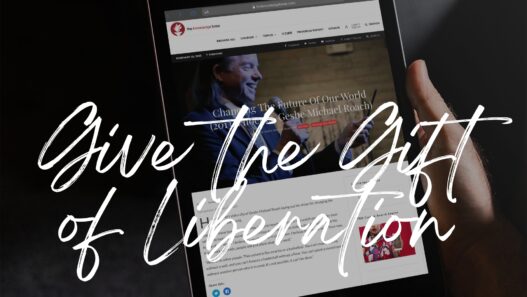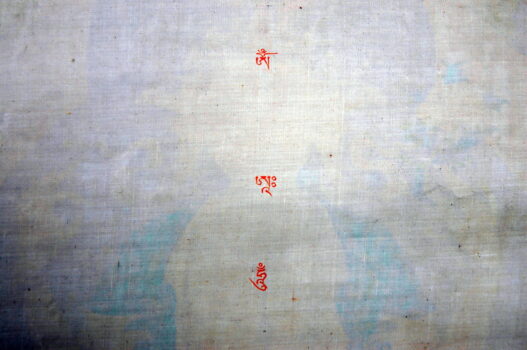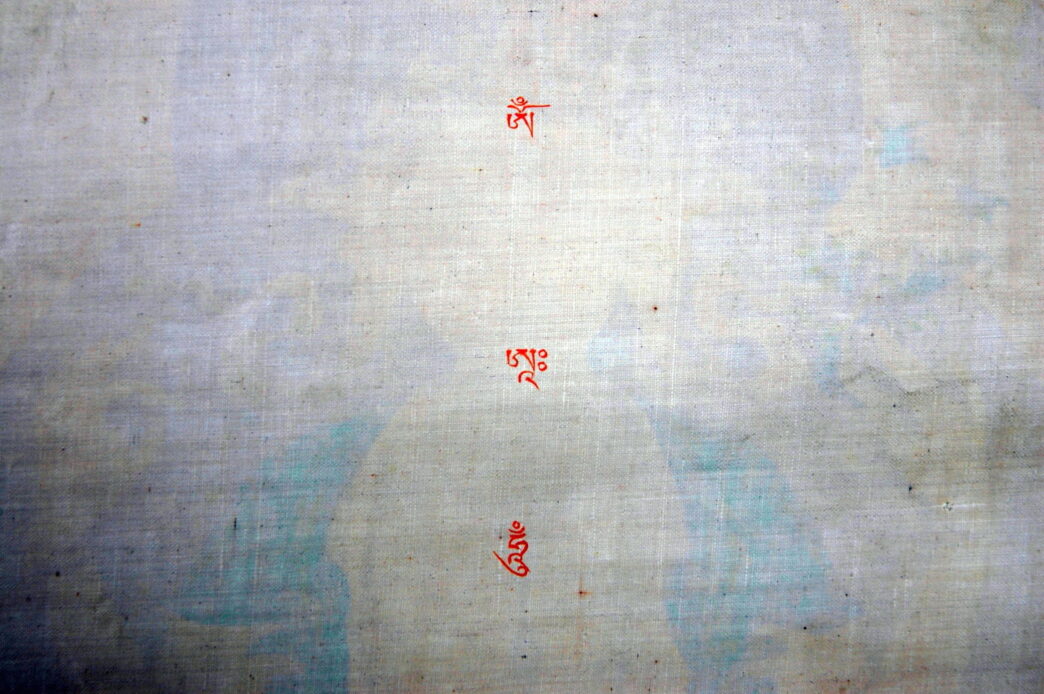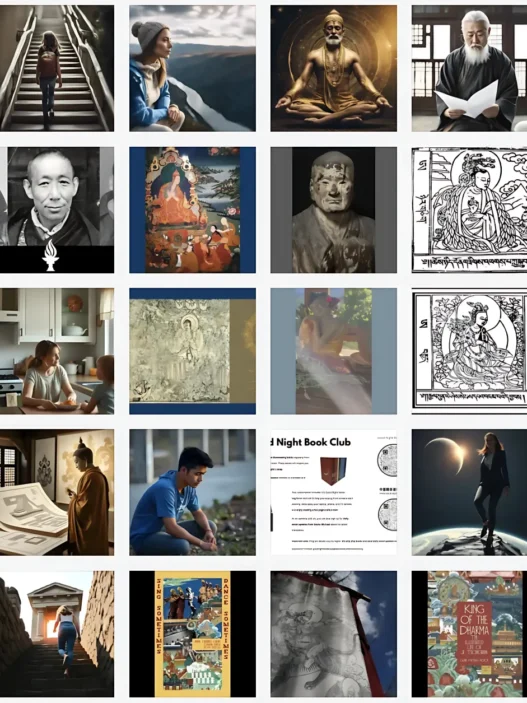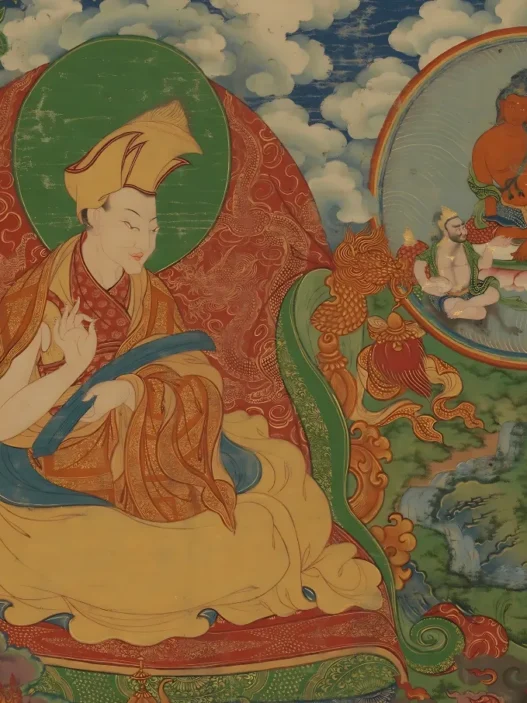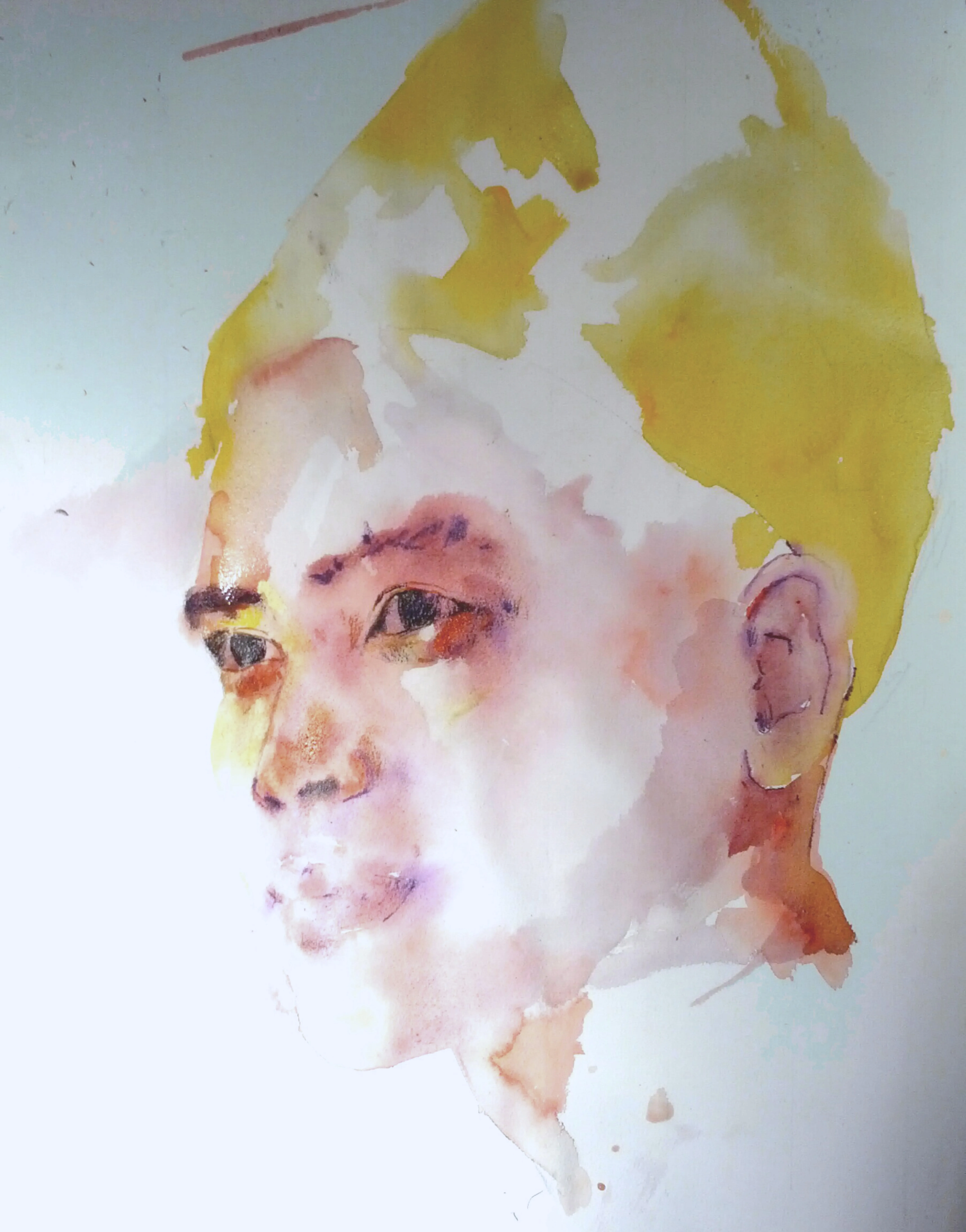This is a brief essay on the meaning of the sacred syllable om, culled from original sources. It was given as a handout during the Tibetan Heart Yoga Series 3 Teacher Training in September of 2005, in Tucson, Arizona.
We thought it would be very helpful for yoga teachers and serious practitioners of yoga to learn about the meaning of om as it’s understood in the Tibetan yoga traditions.
You can read it below in english and we’ve also attached it as a .pdf document for you as well where you can view both the original Tibetan and english translation.
Below there’s also a link to a related guided meditation found elsewhere on The Knowledge Base website to help deepen your practice of the ideas introduced in this essay.
Download this essay as a .pdf file
On the Meaning of Om
Om as One and All Three Diamonds
The most basic meaning of om is to signify the three diamonds: enlightened body, speech, and mind. By itself it sometimes signifies only the first, which is also its function in the combination om, ah, huung.
The first reference here is a very typical one on the signification of om, and comes from Notes on the Two Stages of the Practice of the Angel of Diamond (ACIP electronic text S6412) composed by Master Ngulchu Dharma Bhadra (1772-1851):
The three crucial places on the holy bodies of the root and lineage lamas are marked by syllables representing the three diamonds.
At the center tip of each of their heads is a white om syllable which is, in its very essence, the diamond of their enlightened actions.
At their throats is a red ah syllable which in essence is the diamond of their enlightened words.
And at their hearts is a blue huung syllable, consisting of the diamond of their enlightened thoughts.
The following reference shows how Chone Lama, Drakpa Shedrup (1675-1748) explains om in combination, in his work on the stage of creation in the practice of the Secret Collection (ACIP electronic text S0261), explains how the sound of om contains all three diamonds:
The syllable om includes three parts: the ah, the u, and the ma. When you combine the ah with an u, it becomes o. When you add the little circle that means ma, then you come out with one syllable, om. The sounds that make up om individually represent enlightened action, speech, and thought; when they become one then in om, it represents the indivisible combination of all three.
The exact correspondences of the sounds to the three diamonds are clarified in a commentary by Je Tsongkapa on the secret teaching of the Keeper of the Diamond (Vajradhara), found at ACIP electronic text S5308:
Now the meaning of the mantra is as follows. When you split the syllable om out into its component parts, there are three: the sounds ah, u, and ma. These represent, respectively, the diamonds of enlightened words, enlightened thoughts, and enlightened actions. When you put these same syllables together they become om, representing the indivisible nature of the three diamonds: enlightened actions, words, and thoughts.
Chone Lama Drakpa Shedrup (1675-1748) briefly gives this and other significances of om in a commentary to the stage of creation for the secret practice of the Union of the Spheres (Chakra Samvara) in the tradition of Luipa (ACIP electronic text S0255):
There are different mantras to be repeated in this practice; here I will give you the meaning of the “essential” mantra for the man. Om functions to lead off the mantra; the sounds ah, u, and ma that make it up represent enlightened actions, words, and thoughts.
As mentioned above, om has other kinds of significance, such as the idea of auspiciousness.
The same explanation of om is given by the great Je Tsongkapa (1357-1419) in a text (ACIP electronic text S5334) on how to clean from oneself the karma that would take one to the lower realms. Je Tsongkapa uses the word sna-‘dren instead of the more modern mgo-‘dren, for “leading off.”
The word om in the mantra here has a meaning of auspiciousness, and also acts to start off the mantra.
The great master Ngulchu Dharma Bhadra (1772-1851) repeats this general function of om in an explanation of the popular mantra om mani padme huung, within a commentary on how to do spiritual fasting (ACIP electronic text S6313):
Around a white hri syllable visualize a string of secret sounds: the six-syllable mantra, om mani padme huung, with the parts circling around in a clockwise direction. Then repeat this mani mantra a hundred, a thousand, or some other number of times, being careful to avoid the eight mistakes in mantras: (1-2) reciting them sometimes too fast and sometimes too slow; (3-4) too loud or too soft; (5) saying something else in the middle of some mantras; (6) letting your mind wander off as you repeat the mantra; and (7-8) mixing up the long and short vowels of the Sanskrit.
Here next is the meaning of the mantra. Om serves to start the mantra off. Mani padme means “Wonder! The jewel, with a lotus!” The point is that you are calling to the Angel by mentioning their accoutrements: a string of jewel crystal beads, and a lotus of pure gold. Huung is the root syllable of the enlightened state of mind (tuk), and here represents calling on their high compassion (tuk-je).
The use of om at the beginning of a mantra is so prevalent that mantras have been classified according to its presence. The following description of this classification is found in a famed commentary by Je Tsongkapa on a “realization” practice in the secret teachings of Highest Bliss (ACIP electronic text S5320).
Mantras for recitation may be grouped into four different types. The secret teachings on the Diamond Topknot (Vajra Ushnashi) and the String of Diamonds (Vajravali) state:
Mantras with the syllable om at the head, but without the syllables so ha at the tail, are called “tailless.” The reverse are called “headless.” Those with both are known as “snakes,” and those with neither we say are “truncated”. . .
Om as an Angel
There are places in scripture where the word om serves to represent the presence of an enlightened Angel. The following brief reference is found in a work on a special kind of torma (ACIP electronic text S6356), again by the master Ngulchu Dharma Bhadra.
Now the meaning of the mantra is as follows. The first syllable, the om, represents the Warrior of Diamond (Vajrasattva) the indivisible combination of the three diamonds of enlightened actions, words, and thoughts.
The word also represents another Angel, as we see in the massive commentary on the practice of the Secret Collection (Guhya Samaja) by Je Tsongkapa (ACIP electronic text S5282):
The highest form of the Diamond King of Ritual is intense meditation on the Diamond Angel of Appearances (Vairochana), situated within the eye of the Holder of the Diamond (Vajradhara). As the text says, “You should meditate intensely on the om of the three bodies.”
The phrase “Om of the three bodies” refers to the Diamond Angel of Appearances. For the phrase “meditate intensely” read “do a meditation, going through it in the proper steps”; that is, first meditate on the om, and then meditate upon the Angel of Appearances.
Om and Emptiness
The word om is often seen in the function of symbolizing emptiness. A typical instance is where it represents the emptiness of the “three spheres,” meaning for example the emptiness of the giver of a thing, the person to whom it is given, and the thing given (or action of giving itself); or else the pair of the subject and object of an action. We see this usage here first in the Cow that Produces Every Wish, Je Tsongkapa’s commentary on the practice of Highest Bliss (Sambara) (ACIP electronic text S5320):
Here is the second point [in our discussion of why one must meditate upon emptiness]. Once one has gathered together a mass of merit, one must then bring together a mass of wisdom. For this we are advised that:
The word om represents the fact that the being to whom an offering is being made, and the one making the offering, and the thing being offered itself are nothing more than the imagination.
The point is that the fact that the three sounds in the word om take on these three meanings only because you have, mentally, labelled them that way.
The phrase sarwa dharma, in this particular context, refers to all objects included into the object side of things. And then comes the phrase swabhawa shuddha, which means “free of any nature,” signifying that the object side of things is devoid of any nature of its own.
The word ahang means “me,” referring to the subject side of things which is, just like the object side of things, completely free or devoid of any nature of its own. And it is to indicate this fact that the second swabhawa shuddha is mentioned.
These same meanings of the word are found in a commentary by Master Ngulchu Dharma Bhadra on the practice of the stage of creation in the secret teachings of the Frightener (Bhairava) (ACIP electronic text S6413):
The second step [in blessing the inner offering] is to purify it. The word om represents the fact that the three spheres relating to the inner offering have no existence as a self-existent thing. Swabhawa means “nature,” shuddha means “free of,” and sarwa dharma means “every existing thing.” Swabhawa shuddha means what we’ve just mentioned, and ahang means “me.” To put it briefly, then, the phrase is refering to the emptiness of things, saying that every one of them whether they relate to the object side of things or to the subject side of things is completely free of any nature of its own.
We return again to the text by Master Ngulchu Dharma Bhadra on fasting, (ACIP electronic text S6313), for another description of this concept:
Here is the meaning of the mantra. Om represents the the cosmic play of the fact that the three spheres in an act of giving are totally free. Guru arya means “my Lama, the Realized Being.” Lokeshwara means “Great Lord of the Entire World.” Sapariwara means “along with His or Her Retinue.” Baling is “torma cake,” and partitsa is “partake, each one.” So ha means “give all that is good.”
We see om again as emptiness, but now something more than emptiness, in the famed Great Book on the Stages of the Secret Path, by Je Tsongkapa (ACIP electronic text S5281):
The word om has three sounds in it: ah, u, and ma. These three are your own actions, words, and thoughts; and om stands for the combined essence, the single song, of the emptiness and the compassion of these three within you.
On the Benefits of Uttering Om
The tantra just quoted stated the benefits of uttering om and other sacred sounds, saying that “one can reach high goals” even without thinking spiritual thoughts as you do so. Various other benefits as well are given in standard references like that found in the following work on the creation stage of the secret teachings of Highest Bliss (ACIP electronic text S5904), written by the First Panchen Lama (1565-1662).
In striking with the dagger, the rest is easy to understand; here though is the meaning of the mantra with the gha gha and so on. There are three components of the syllable om; these are ah, u, and ma. When the u is applied to the ah, they change to oh; then when you add the ma, the little circle, it becomes om. These three syllables represent enlightened action, speech, and thought. The fact that all three are combined in the syllable om symbolizes that the three diamonds are indivisible.
If you utter the syllable om while thinking about what it symbolizes, you accrue seven different benefits, as described in the Tip of Diamond:
I’ll tell you here what the om can do,
This heart that holds the jewel:
It gives you the highest, and wealth as well,
And glory, and all prosperity;
It grants to you great fortune too,
Has meanings of making a declaration,
And lastly auspiciousness.
In the Cow that Produces Every Wish (ACIP electronic text S5320), Je Tsongkapa explains these benefits in further detail:
Here is the meaning of the mantra. The syllable om is described in the Tip of Diamond as follows:
I’ll tell you here what the om can do,
This heart that holds the jewel:
It gives you the highest, and wealth as well,
And glory, and all prosperity;
It grants to you great fortune too,
Has meanings of making a declaration,
And lastly auspiciousness.
The point is that there are seven different benefits you can get from reciting this syllable. First of all, it will bring to you the four attainments of the “highest” goal and the others mentioned. Secondly it grants you great and wonderful fortune, the blessing of virtue.
The syllable furthermore has the function of “making a declaration,” which here means that it acts to start off the mantra. Finally, it is something very auspicious to recite the mantra. Thus it is the very heart or essence that can fulfil the wishes of all other beings; it acts the same as if you were holding a wishing jewel.
By the way, it is not the case that . . .these wonderful qualities are inherent in the syllable. Sacred syllables must first of all have been composed by an extraordinary person such as an Enlightened Being; someone of great knowledge and power.
And remember that the om is made of ah and u and ma, representing your own actions, words, and thoughts. The explanation is that the om is the emptiness of these three; that it is the embodiment, the one essence, the single song of this emptiness and of the compassion in the heart of the person who is perceiving the emptiness.
If you keep in mind this explanation as you recite the syllable, then the om can do what we just said it would. This same idea applies to all other mantras. . .
Options for Further Study
To deepen your study on some of the ideas introduced in this essay, please refer to the following guided meditation on The Knowledge Base:
The Meaning of Om: A Guided Meditation (1999, New York, Geshe Michael Roach)

It’s a very special guided meditation which focuses on the breath, and the sound and meaning of Om.
Chanting Om at the beginning and/or the end of a yoga class has become somewhat customary in Western yoga, and that’s a good thing. It’s good to know what the Om really means; here’s how it’s explained in the classics of the Buddhist yogic tradition.









